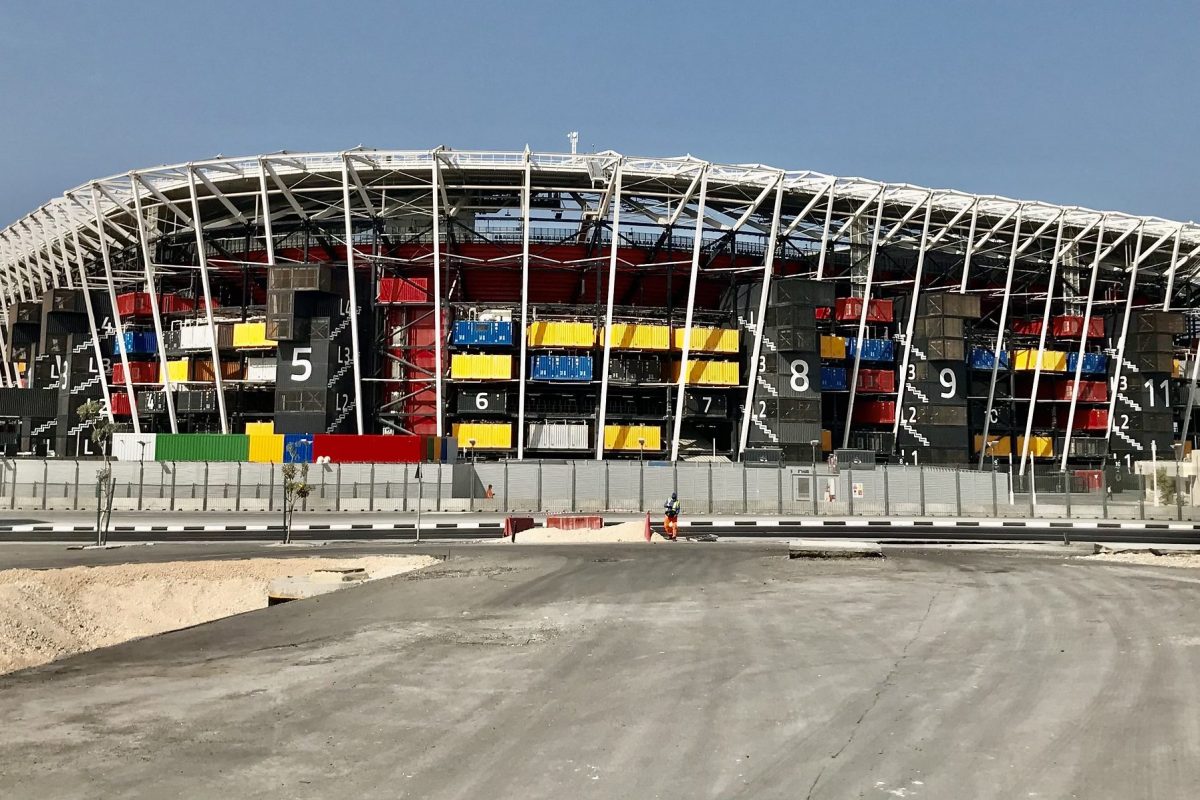Skift Take
Qatar has meticulously planned for a tourism future after the World Cup closes this month. It will not include a focal point of attention during these past weeks. Stadium 974 is being taken apart and its pieces repurposed.
Iconic World Cup stadiums have long lived in the memory of those who played in and attend the tournament, often standing as a beacon in the backdrop of the host city, but Stadium 974 which held seven games in Doha will soon cease to exist.
Expensive World Cup stadiums have often proven to be white elephants for the host country but the temporary arena that is Stadium 974, unveiled in November last year, has done its job and its prefabricated pieces will soon be dismantled.
Seats from a number of arenas in Qatar will be removed and given to football projects overseas but the fate of the modular elements at Stadium 974 – which organisers say reduced costs and waste generated – is still unclear.
Media reports suggested the containers and other parts that make up the stadium would be shipped to either Africa or Uruguay, who are might be looking to bid for the 2030 World Cup as part of a South American bid.
“Initial work has begun to take the venue out of tournament mode ahead of handing the stadium back to the host country,” tournament organisers, the Supreme Committee for Delivery and Legacy, told Reuters.
“The precise timeline for the full dismantling and re-purposing of the stadium is being finalised at the moment.”
Described as the “first fully-demountable tournament venue” in World Cup history, the arena will also host a fashion show on Dec. 16 – two days before the final – with several music artists set to perform.
Metal Arena
Stadium 974 is the first stadium fans arriving in Qatar see when they land at the airport and travel into central Doha.
The metal arena sits on the waterfront overlooking the Arabian Gulf and the West Bay skyline, but it could easily be mistaken for a shipping container yard if not for the structure that supports the roof.
The 44,089-capacity stadium is named after the number of containers of various bright colours used to build the arena, while 974 is also Qatar’s international dialling code.
“The shipping containers used in construction can be recycled and reused for building stadiums or other sporting facilities in different locations,” said Mohamed Al Atwaan, the arena’s facilities management director.
“This stadium has massive legacy potential.”
Unique Structure
The unique structure made for an electric atmosphere, especially when raucous fans from Mexico, Argentina and Brazil fans turned up in large numbers for their team’s matches and sang as one, their chants echoing around the arena.
The stadium’s acoustics helped them raise the decibel levels while the stands also reverberated as they bounced up and down in its tiers.
What started with a Mexican wave in a group game between Mexico and Poland, finished with the Brazilians dancing the samba in the aisles along with their players on the pitch after they thrashed South Korea 4-1 in the last 16.
Stadium 974 is also the only one of eight World Cup arenas in Qatar without air conditioning, which meant all seven games it hosted could only be played after sunset.
But temperatures inside the arena were still cool as the structure allowed for ventilation using the land and sea breeze.
(Reporting by Rohith Nair in Doha; Editing by Christian Radnedge)
This article was written by Rohith Nair from Reuters and was legally licensed through the Industry Dive Content Marketplace. Please direct all licensing questions to [email protected].
![]()
The Daily Newsletter
Our daily coverage of the global travel industry. Written by editors and analysts from across Skift’s brands.
Have a confidential tip for Skift? Get in touch
Tags: qatar, sports tourism, world cup
Photo credit: Stadium 974 (pictured) will be dismantled after the World Cup in Qatar. G Travels / Flickr
